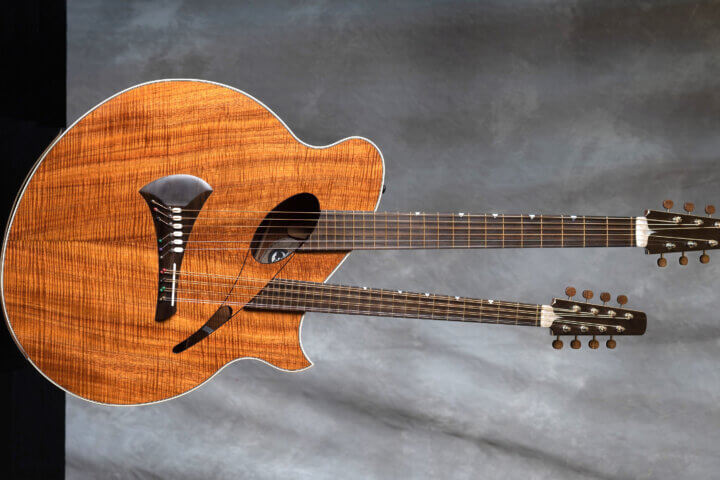By Holly Camero — Correspondent
Stories, both fictional and factual, have stoked Mark Sutherland’s lifelong passion for building model boats.
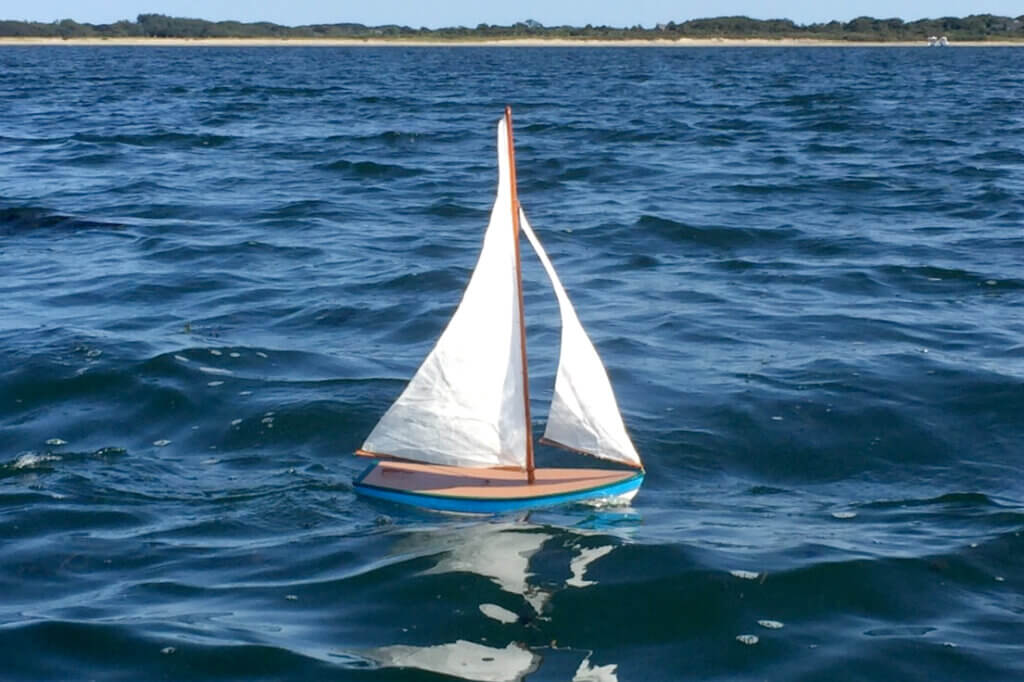
He built his first model when he was about 11 after reading “Stuart Little” by E.B. White. When Stuart, a 2-inch-tall mouse-like boy, raced a toy boat across a pond in New York’s Central Park, Sutherland was right there beside him, at least in spirit. It was then that he knew he just “had” to make a model ship.
His grandfather, who owned a house on Nantucket, gave him a piece of balsa wood, which he fashioned into a schooner, and his mother made the sails. The boat didn’t sail very well, Sutherland says, but it was a start.
“I came out as a babe,” he says. “I loved the maritime history and the sea and the whaling history. I think I was born genetically to do this.”
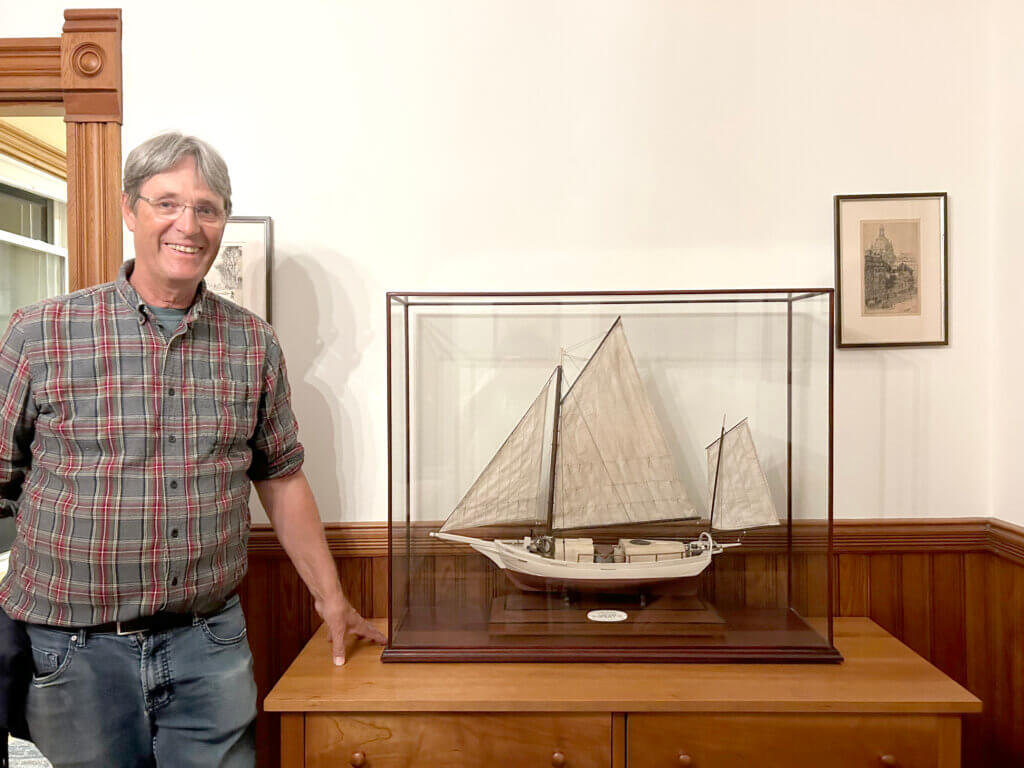
Encouraged by his father to learn a trade, Sutherland — who had told his dad as a child that he wanted to make model ships for a living — became a carpenter after high school. He designed and built boats, furniture, and houses.
“I’m a pretty highly skilled craftsman,” he says.
In the summer of 1979, after spending the winter building boats in Maine, he returned to Nantucket, where a friend commissioned him to make small model boats from bone for his antique shop.
“That was the very beginning, and here we are 40 years later,” Sutherland says. “I’ve been doing this for a long time.”
Much of his work is created in his studio at The Umbrella in Concord. “I’m really happy to be involved in that place, and I really value it,” he says.

Historically accurate art
At first, he built model boats in the summer and scalloped and did carpentry work in the winter. In 1982, he began making models full time.
“It kind of snowballed,” Sutherland says. “It was a dream come true.”
Sutherland specializes in 18th- and 19th-century sailing vessels, including whaling ships, yachts, and traditional catboats used for fishing, particularly around the Cape and islands.
“I’ve done numerous models of catboats — like hundreds,” Sutherland says.
His models are primarily made from pine, cherry, mahogany, and walnut; sometimes he incorporates exotic woods, such as ebony and rosewood, into his art.
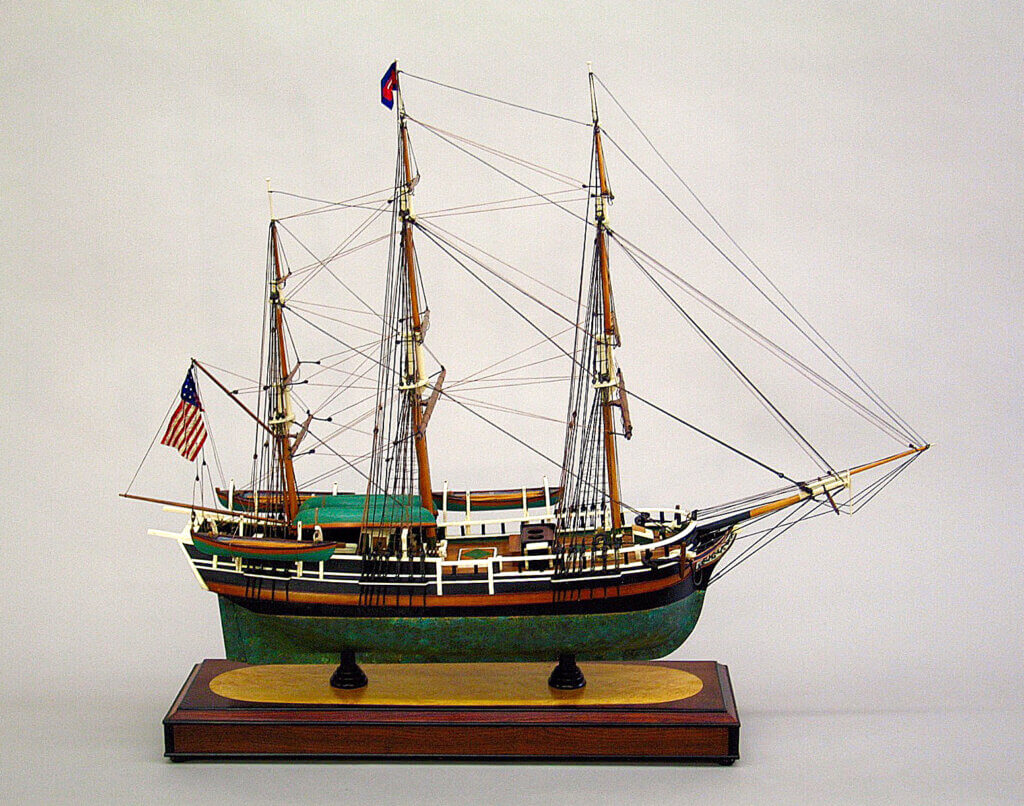
“Instead of using paint on [the boats], I will use different colors of wood,” he says.
A fellow artist makes the sails Sutherland adds to his rigging.
Over the years he has created outdoor models 7 feet long and 5 feet high, small ships to sail on ponds, 10- to 20-inch boats for indoor display, half models to hang on a wall, weathervanes, and the occasional jewelry box. He also restores old models and sometimes full-size boats, the latter mostly for fun, he says.
Most of his work is done on commission, and some projects take months to complete.
“Part of my schtick is to be historically accurate but still have an artistic twist to it,” Sutherland says.
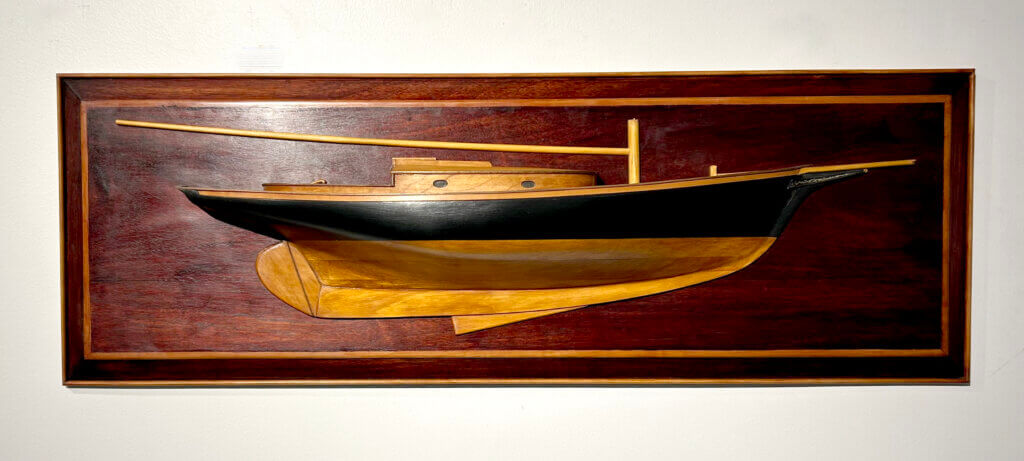
A boat for every occasion
An avid sailor, Sutherland also has a collection of traditional small craft, some of which he’s restored and others he designed and built in his own backyard. The biggest was a 22-foot skipjack, which fell prey to Hurricane Bob in 1991.
“I tell people, ‘Model boats is my profession, and real boats is my hobby,’” he says.
There’s no sunset on the horizon for his stated vocation.
“I’ve been doing this since 1979 — for 40-plus years — and I’m going to turn 70,” he says. “I daydream of backing off a little bit and doing other things, but I really like what I do.”
See more of Sutherland’s work at sutherlandshipmodels.com.





